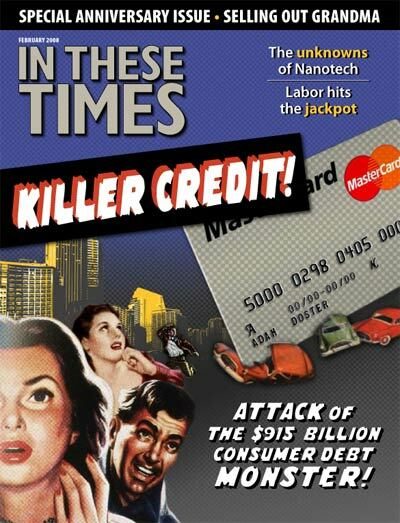
The SUV-driving, stun-gun-wielding housewife is coming to a suburb near you. In Arizona, Tupperware-style Taser parties have become all the rage, thanks to the enterprising savvy of saleswoman Dana Shafman, founder of Shieldher Inc.
Shafman’s little soirees aren’t just popular, they’re also highly profitable. Over light conversation and snacks, women are invited to handle the palm-sized C2, the latest (and smallest) civilian version of a Taser stun gun. The C2 is also the most affordable Taser to hit the market, starting at $299.99 – with an option to upgrade the C2 with a $50 laser beam to better the chances of debilitating a human target. Because practice makes perfect, the women in attendance are encouraged to grab a C2 and take turns shooting at a cardboard cutout representing a male attacker.
“I felt that we have Tupperware parties and candle parties to protect our food and house, so why not have a Taser party to learn how to protect our lives and bodies?” Shafman told the the Arizona Republic. Shafman projects that the parties will be held in at least a half-dozen other states by March.
The C2 comes in four iPod-matching metallic colors: “Hot pink” has been the top seller since the weapon hit the consumer market last summer. While the company admits that men, too, might benefit from carrying the mini-stunner, Taser’s marketing strategy has been directed at the phobic and fashion-forward female consumer.
Last July, the New York Times previewed the C2’s debut with a feature article titled, “Feeling Secure With a Little Shocking Pink.” Accompanying the article was a glamour-action photo of Taser International President Kathy Hanrahan with the weapon in hand. Hanrahan made no bones about the C2’s direct marketing strategy and conceptual design: “It’s a woman’s product,” she said.
In a number of promotional media appearances and technology conference presentations since that time, Taser officials have even gone so far as to dub the C2 the “Lady Taser.”
“When you’re going out to a nightclub or you have the device clipped onto your belt at a business meeting, you don’t want to look like Dirty Harry,” company spokesperson Steve Tuttle told ABC News last summer.
In what could have easily passed as a terribly tacky infomercial, ABC News ran a December 2007 “Money Matters” segment praising the palm-sized stunner as an exciting holiday gift for women, in which anchor Laura Marquez described the C2 as a “Taser with a softened look.”
Despite a plethora of headline-making news over the course of the year – including the notorious “Don’t Tase Me, Bro” incident during Sen. John Kerry’s (D-Mass.) University of Florida speech in September 2007 – ABC News showcased Taser’s own video montage of alleged male criminals being stunned into submission. For the ABC News segment, the network opted for a large-font text banner to accompany the images: “Tasers Sold to Protect Women.”
None of those video snippets actually depicted women being attacked, and the network’s Taser-friendly sloganeering (and Marquez’s ridiculously soft-balled questions) didn’t seem coincidental in the least.
The Scottsdale, Ariz., corporation has spent years honing a relentless public relations campaign – complete with a Rolodex of at-the-ready medical, legal and law enforcement stun technology “experts” – that seems to have convinced many news outlets that Taser’s word is gospel truth.
The success of Taser’s C2 sales over the past several months can largely be attributed to the company’s aggressive strategy to play on women’s worst fears of assault and rape. While the C2 might look cute, it is utterly debilitating – a serious step up, as it were, from older self-defense products like mace and pepper spray.
Just as with the “professional” model, a triggered mini stun gun shoots out two, thin nitrogen-fueled wires with dart-like tips that penetrate clothing and embed in the skin. These darts are juiced to deliver an incapacitating 50,000 volts of electricity for 30 uninterrupted seconds – ostensibly to allow the Taser-wielder to make a quick getaway.
Aside from the various bells and whistles that would appeal to paramilitary-minded weapon owners, the key difference between C2s and the much more costly civilian and “professional” versions of X-26s is that they enable the “stunner” to shock the “stunnee” over and over again.
Whether we’re talking about cutesy mini-stunners, or their beefed-up big brothers, Taser has become a household name and a veritable pop culture phenomenon rooted in either opposition or celebration of this futuristic weapon that was once but a gleam in Gene Roddenberry’s creative eye. (Unlike the Taser, the sci-fi Star Trek “phaser” could specifically be set to a specific stun level, all the way up to a deadly jolt.)
Devoted Trekkies with “Set Phasers to Stun!” T-shirts were likely never the cool kids on the block, but “Don’t Tase Me, Bro” bumper stickers and T-shirts are a different story. Some are wearing the shirts to express their outrage toward the prevalence of Tasers in use by “campus cops” on college, high school, middle school and even elementary school grounds – as well as in political demonstrations as a terrifying method of crowd control.
But you might be just as likely to spot a clean-cut fraternity member wearing the same shirt – only to find that he hasn’t given a thought as to whether being hit repeatedly with 50,000 volts of electricity should be considered an act of torture.
There’s been no shortage in the blogosphere of people poking fun of Andrew Meyer’s appeals, moans and screams that accompanied the University of Florida incident. Indeed, sites like www.dont-tasemebro.com are further proof of the ways in which even the most serious issue can be trivialized and depleted of its power. Why pass up a perfect opportunity to make a bit of money ($29.95 per T-shirt, to be exact) on a popular slogan, even if it originated in the pleading moments before the sickening crack-snap-sizzle sound of a Taser shooting electrified darts into a person’s skin?
Taking outright pleasure in the pain the weapon can inflict, the popular TV series “24” seems to have developed a love affair with this kind of weaponry. At least two “terrorists” have been stun-gunned thus far, in addition to Abu Ghraib-style electrical torture during interrogations.
Even low-budget Asian martial arts movies shown in the United States feature the occasional stun gun stunt, alongside more familiar, high-flying punches and kicks.
People who have been tased often liken the experience to the sensation of dying – something that does not seem like an exaggeration in light of at least 250 Taser-related deaths in the United States since 2001, according to Amnesty International. The U.N. Committee Against Torture recently determined that the use of Tasers “causes acute pain, constituting a form of torture.”
Until recently, reports of Taser-related incidents and deaths have tended to involve men, typically described by police as having behaved in deranged and/or dangerous ways before being stunned.
But what once amounted to a few reported Taser encounters per month has now taken the shape of daily accounts throughout North America, including several high-profile deaths in Canada.
Last September, the death of a non-English-speaking Polish immigrant at the hands of inexplicably aggressive, Taser-wielding Royal Canadian Mounted Police at the Vancouver Airport drew international outrage when a bystander’s cell phone footage thwarted initial “official” efforts to downplay what had happened.
Increasingly, people being stunned aren’t just people with limited English-speaking skills; they’re also children, teenagers, the elderly and the disabled. In fact, with astonishing frequency, police are using Tasers on women and girls.
In November 2007, for instance, Chicago police tased an 82-year-old woman with dementia.
Last June, a homeless woman died outside an Oklahoma City shelter after she was thrown on the ground, handcuffed by police and then tased while incapacitated.
In Green Cove Springs, Fla., the family of an agitated 56-year-old wheelchair-bound woman filed suit last February after watching police shock her 10 times in response to their request for assistance. Her death was ruled a homicide.
Ohio has become an unexpected epicenter of the use of Tasers against women and girls. Last May, Crystalynn Coker, a 17-year-old African-American student was tased in Monroe, Ohio, when she refused to back down from a racist verbal barrage by a fellow student and staged her own form of a one-person, nonviolent sit-in after her teacher ordered her out of the classroom. According to Coker and her family, a police officer was called in without any justifiable cause to physically remove her from the room. Once the officer pulled Coker from her chair, he handcuffed and tased her three times without any explanation before, during or after the attack.
In the town of Warren, Ohio, footage emerged in September 2007 of a policeman shocking 38-year-old Heidi Gill repeatedly. In the video, Gill is shown crawling, moaning and pleading desperately as she tries to get away from the apparently trigger-happy officer. Footage shows Officer Rich Kovach handcuffing and dragging Gill’s body around during much of the ordeal, which is now under investigation.
One of the strangest overreactions involving Taser use occurred in, of all places, a Best Buy electronics store in Daytona Beach, Fla. Amid frenetic rush of pre-Christmas shoppers, 35-year-old yoga instructor Elizabeth Beeland had been waiting in line to purchase a CD player with her credit card. When her cell phone rang, Beeland stepped outside the store’s noisy environment to have a brief conversation. Although she left both the CD player and credit card with the cashier, the clerk somehow concluded that Beeland might be using a stolen card, and called police officer Claudia Wright over to handle the situation. Beeland took umbrage at the accusation, and raised her voice. Wright threatened to arrest her if she didn’t stop yelling. In what has become an increasingly familiar scenario – the rapid escalation from an initial encounter with a civilian, culminating with the infliction of horrendous pain, sometimes within just a few seconds – Wright opted to use her X-26 over any number of more logical alternatives. On the surveillance tape, Beeland is seen trying to back away from the Taser-wielding cop, then falling to the floor in obvious pain after the stun gun wires pierced her flesh.
Worse yet, Tasers have already begun to be used in robberies, domestic violence and hostage situations.
Among other disturbing reports, a serial rapist in Modesto, Calif., kidnapped and brutally raped a 27-year-old woman in August 2006 after stunning her with a Taser.
For the sake of those schmooze, stun and sales parties, they might do well to keep this kind of information under a tightly sealed Tupperware lid.








